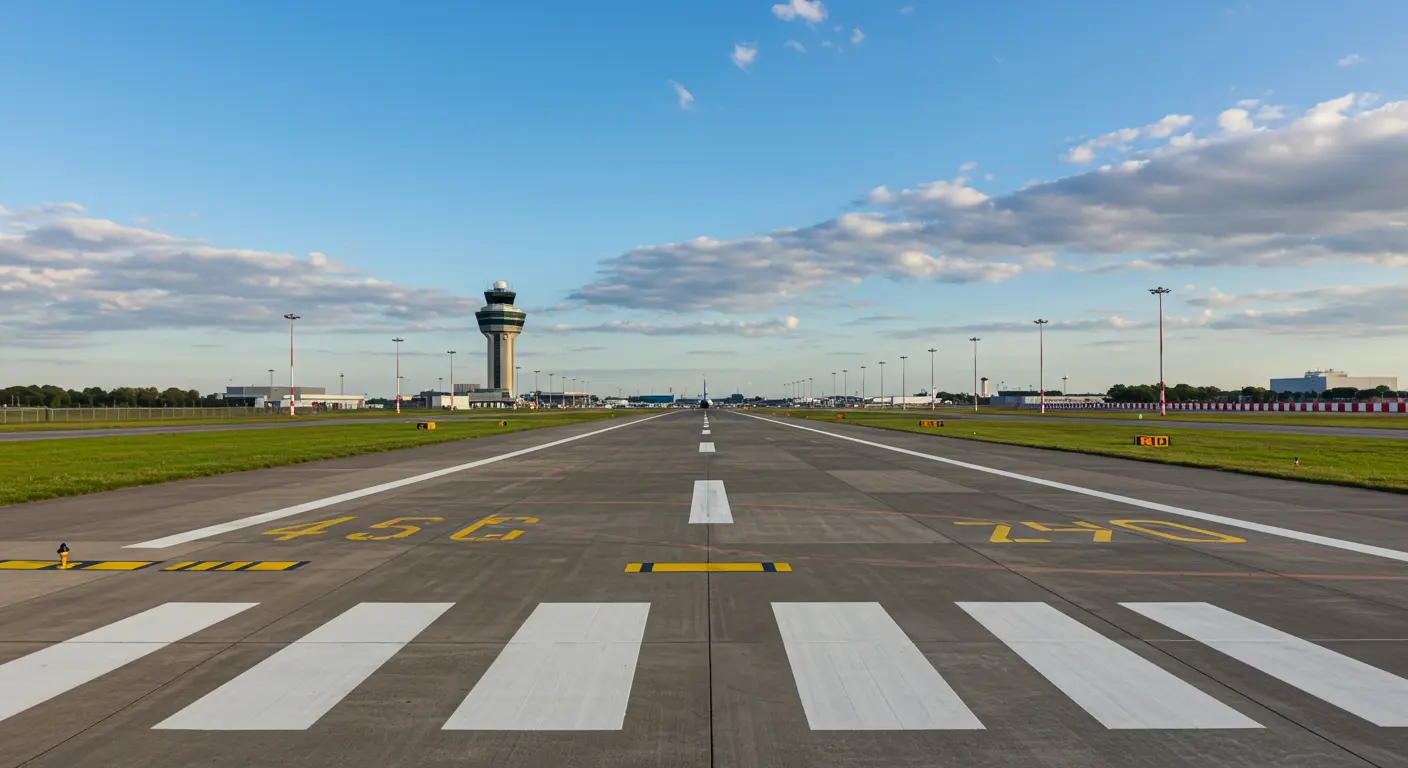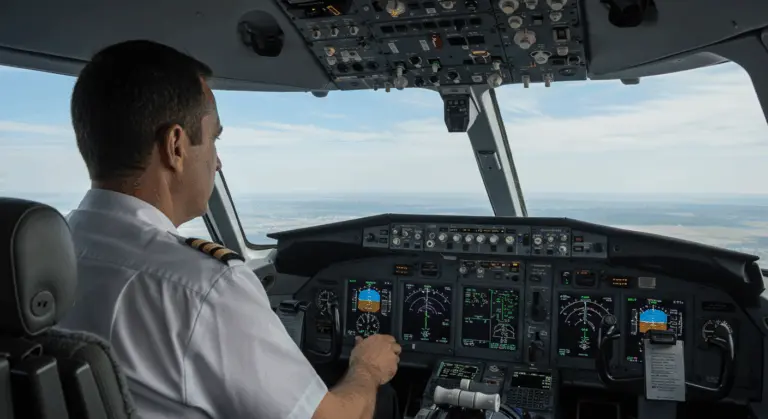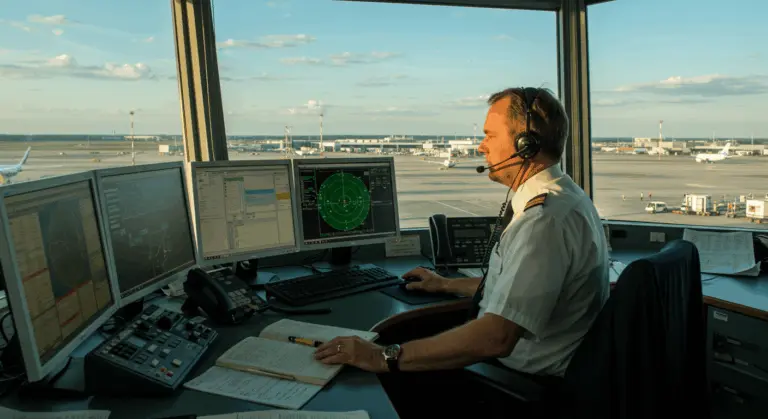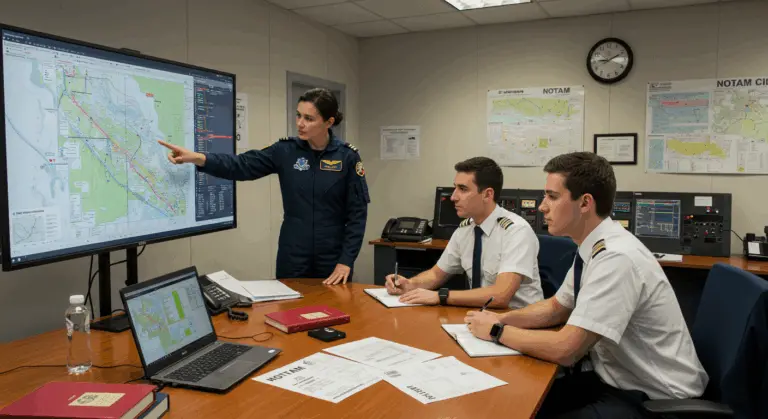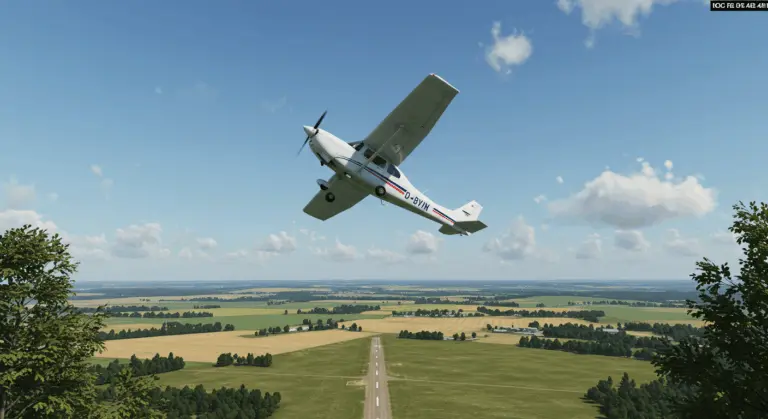Understanding Runway Markings – A Comprehensive Guide
What Are Runway Markings? – An Overview
Runway markings form an intricate system of symbols, lines, and colors painted across runways, taxiways, and other airport surfaces. These visual elements serve as essential navigational aids for pilots, ground crew, and air traffic control, establishing a standardized visual language that ensures safety and operational efficiency throughout the global aviation network.
These markings have a fundamental purpose: guiding aircraft through the critical phases of takeoff, landing, and taxiing. Every symbol carries specific meaning—whether indicating where usable runway begins or assisting with precise alignment during approach.
Color coding forms the foundation of this system’s effectiveness. Runway markings appear in brilliant white, creating maximum contrast against dark asphalt surfaces, while taxiway markings and holding positions utilize bright yellow—a deliberate choice that provides unmistakable visual differentiation from runway areas.
Safety is enhanced by strategically placed holding position markings and accompanying signage, which regulate ground traffic flow and precisely position aircraft before they enter active runways.
Types of Runway Markings – A Detailed Breakdown
Airport markings follow a standardized classification system, organized into four primary functional categories: Runway Markings, Taxiway Markings, Holding Position Markings, and Other Markings. This systematic approach provides comprehensive visual guidance for both pilots and ground personnel across all phases of aircraft operations.
Runways themselves fall into three distinct operational categories, each demanding progressively more sophisticated marking systems based on their technological capabilities and intended use:
-
Visual Runways – These fundamental runways lack instrument approach capabilities and display only essential markings, typically just a dashed centerline and runway identification numbers (designators). Designed for visual flight rule operations, they are aviation’s most basic runway type.
-
Non-Precision Instrument Runways – Supporting at least one non-precision approach procedure, these runways feature enhanced marking systems such as threshold markings, centerlines, and aiming point markings enabling safer landing operations when visibility becomes compromised.
-
Precision Instrument Runways – Representing the pinnacle of runway sophistication, these installations feature precision approach aids such as an Instrument Landing System (ILS). Beyond incorporating every marking found on non-precision runways, they include specialized elements like touchdown zone markers specifically engineered to support safe landings when visibility deteriorates significantly.
The comprehensive runway marking system encompasses several critical components, each serving a specific navigational purpose:
These standardized markings function as a universal visual language that pilots can confidently interpret at any airport worldwide. This consistency ensures uniform safety standards across the entire global aviation network, regardless of geographic location or local operational variations.
Runway Designators – Understanding the Numbers
Runway designators appear as prominent numbers painted at each runway end, serving as crucial identifiers for pilots and air traffic controllers alike. These numerical codes correspond directly to the runway’s magnetic orientation, delivering essential directional intelligence for navigation and approach planning procedures.
The numbering system follows simple mathematical principles: the runway’s magnetic heading gets rounded to the nearest 10 degrees, then divided by 10.
Since aircraft can utilize runways from either direction, each physical runway bears two designators—one for each approach end. These numbers differ by exactly 180° (or 18 when divided by 10), creating complementary pairs.
Airports with parallel runways employ letter suffixes to distinguish between them: L for left, C for center, and R for right, as viewed from the approach direction.
Runway Centerline Markings – Guiding Aircraft
Runway centerline markings create a vital navigational reference, appearing as a precisely dashed white line running down the runway’s center. This visual guide helps pilots maintain accurate aircraft alignment throughout takeoff and landing operations.
The centerline follows an exact pattern: 120-foot white stripes separated by 80-foot gaps. This standardized design provides more than just basic alignment guidance.
Runway Threshold Markings – The Start of Usable Runway
Runway threshold markings serve as critical visual indicators, precisely defining where usable runway begins for landing operations. These consist of longitudinal white stripes—each 150 feet long—with quantities corresponding to runway width, creating standardized recognition patterns.
These markings are especially important on instrument-equipped runways, where precision landing guidance becomes essential. They offer pilots a definitive visual reference during the critical transition from instrument flight to visual landing conditions.
When weather conditions deteriorate, threshold markings integrate seamlessly with approach lighting systems, creating a visual pathway that guides pilots safely to the runway surface. This coordinated system of markings and illumination represents a fundamental safety component, ensuring pilots can accurately identify proper landing initiation points regardless of visibility challenges.
Runway Aiming Point Markers – Targeting Touchdown
Runway aiming point markers serve as precision visual aids, providing pilots with an exact target during landing approach sequences. These appear as two substantial white rectangles positioned on either side of the centerline, approximately 1,000 feet from the threshold, establishing a consistent visual reference for descent planning.
Aviation professionals commonly refer to these as the “1000 foot markers,” and they serve as the optimal approach target for aircraft. Pilots receive training to plan their touchdown on or slightly beyond these markers, establishing operational consistency across diverse airports and runway configurations.
The aiming point differs fundamentally from the touchdown point. While the aiming point serves as the visual target during approach, the touchdown point marks where aircraft physically contact the runway.
On runways equipped with instrument landing systems, these markers collaborate with electronic guidance to establish redundant safety protocols. During the transition from instrument to visual flight, the markers provide immediate orientation cues for maintaining correct approach angles.
Runway Safety Area – Ensuring Safe Operations
The Runway Safety Area (RSA) represents a critical infrastructure element designed to minimize aircraft damage during takeoff or landing incidents. This specially prepared surface extends beyond the runway itself, functioning as a protective buffer zone designed to reduce incident severity when aircraft veer off course, undershoot, or overrun the runway.
The RSA undergoes careful grading, drainage, and construction to support aircraft weight without causing substantial damage during emergency situations. This zone must remain clear of potentially hazardous objects and structures that could harm aircraft—with exceptions only for essential air navigation equipment that must occupy these areas.
Multiple types of runway safety incidents can occur, each presenting unique challenges:
Airports implement multiple protective layers beyond the physical RSA to address these risks. These include Engineered Materials Arresting Systems (ERAS) installed at runway ends where standard RSA dimensions cannot be achieved due to terrain limitations or other constraints.
Runway Safety Area dimensions follow standardized specifications based on airport classification and the aircraft types they accommodate. Major commercial airports serving large jets typically feature SAS extending 1,000 feet beyond each runway end and 500 feet to each side of the runway centerline.
Taxiway markings are essential for safe and efficient ground operations, creating guidance pathways between runways and terminal areas. Their distinctive yellow color contrasts sharply with white runway markings, providing unmistakable visual differentiation that helps pilots instantly recognize their operational environment.
The centerline represents the most fundamental taxiway marking—a continuous yellow line guiding aircraft along designated paths. Pilots maintain their aircraft’s nose wheel precisely on this line to ensure adequate clearance from obstacles.
Taxiway edge markings establish clear boundaries of the taxiway surface, indicating safe operational zones for aircraft. These typically manifest as solid yellow lines on paved surfaces bordering unpaved areas, or as double yellow lines separating taxiways from other paved surfaces not intended for aircraft use.
Surface-painted signs complement physical signage throughout airports, providing directional information and location identifiers directly onto taxiway surfaces. These encompass taxiway designators (letters or alphanumeric codes), directional arrows indicating routes to runways or connecting taxiways, and geographic position markings that help pilots confirm their location on complex airfields.
Among taxiway markings, holding position indicators rank as the most critical—these specify exactly where aircraft must stop and obtain clearance before proceeding onto active runways. The marking consists of four yellow lines spanning the taxiway width: two solid lines always facing aircraft required to hold, and two dashed lines facing the runway.
Enhanced taxiway centerline markings appear near runway holding positions, featuring yellow dashed lines flanking the standard centerline. This visual enhancement alerts pilots to approaching runway intersections, prompting heightened situational awareness at these critical junctures.
Runway Lighting Systems – Enhancing Visibility
Runway lighting systems form a critical component of airport infrastructure, providing visual guidance during darkness and adverse weather conditions. These illumination networks transform invisible runways into clearly defined operational paths, enabling continuous airport operations regardless of visibility limitations.
The primary function involves delineating runway boundaries and centerlines through strategically positioned lighting, allowing pilots to maintain proper alignment during flight’s most critical phases. Unlike static daytime markings, these dynamic systems offer adjustable intensity levels that match environmental conditions—providing optimal visibility without creating vision-impairing glare.
Runway Edge Lights define the lateral runway boundaries, appearing as white lights that transition to amber in the final 2,000 feet (or one-third of runway length, whichever is shorter). This color change provides pilots with an intuitive visual cue that the runway end approaches.
Centerline lighting extends down the runway middle, delivering crucial alignment guidance during landing and takeoff operations. These lights maintain 50-foot spacing intervals and feature an ingenious color-coding system: white lights extend from the threshold, but within the final 3,000 feet, they alternate between white and red before transitioning to solid red for the last 1,000 feet.
Touchdown Zone lighting features rows of white light bars positioned symmetrically along the runway centerline, extending 3,000 feet from the threshold or to the runway midpoint—whichever distance is shorter. These lights assist pilots in identifying optimal landing areas and assessing approach angles, significantly enhancing safety during instrument approaches when external visual references may be severely limited.
Runway lighting control systems vary by airport type. Facilities with active control towers rely on air traffic controllers to adjust lighting based on current conditions and pilot requests.
Modern runway lighting increasingly incorporates LED technology, offering substantial benefits: enhanced brightness, reduced power consumption, extended service life, and improved reliability under extreme weather conditions.

